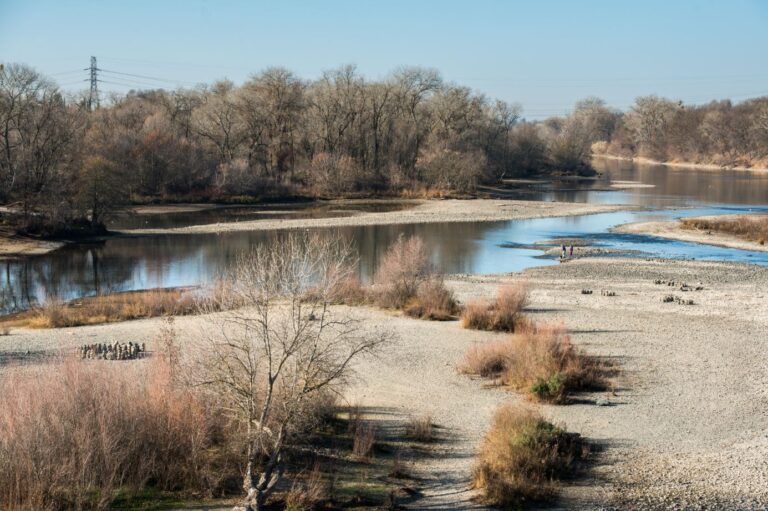
Dear Colleagues.
This is the first in a periodic series of blog posts that discusses the work of the Water Forum and its members to balance the coequal objectives of water supply reliability and environmental stewardship on the Lower American River. Feel free to reach out to me with any questions or suggestions.
Making the Best of the Poor Conditions in this Critically Dry Year
By Jessica Law
Severe drought conditions are back in California. Unfortunately, that means the Lower American River is headed into what may be some of the worst summer conditions we’ve seen on the river in recent memory.
I won’t sugarcoat it. Conditions in the river will be bad. However, the Water Forum and our partners are working hard to ensure conditions are as good as they can possibly be, and to minimize harm to fish and habitat.
What to expect in the coming months
As you may have seen on the news, we began this year with a near-normal snowpack. In most years, the snowpack melts and feeds our lakes and rivers. This year, the snowpack disappeared in the span of several weeks, soaking into the dry soil or evaporating—perhaps foreshadowing what may turn out to be the case study for climate change impacts on our water supplies and environment.
Because of the disappearing snowpack and lower storage in Folsom Reservoir from a dry 2020, we can expect to see river flows fall to 550 cubic feet per second (cfs) at Hazel Avenue this summer. That’s barely above the 500 cfs minimum established in the Water Forum’s flow standard, which the U.S. Bureau of Reclamation is implementing. For reference, flows right now are around 1,000 cfs. So we have big changes coming.
People often think that river flows are the most important factor for fish survival. But, in fact, temperature is the greatest factor. Low flows mean warm water. This summer, temperatures in the American are 71 degrees on average, which is above the 68-degree maximum target for healthy salmonids. While that won’t kill salmon and steelhead outright, it may cause chronic health problems that could lead to death for some fish.
Addressing the challenges
Since early this year, as the reality of these critically dry conditions emerged, the Water Forum has been working closely with Reclamation and state water managers by providing technical data and recommendations to help inform Folsom operations and statewide water supply decisions.
Our overarching goal is to end 2021 with the best possible conditions in Folsom Reservoir and the Lower American River, in case drought continues next year.
One of the most important steps we’ve taken so far is to work with Reclamation, which manages Folsom Reservoir, to preserve cold water in Folsom Reservoir for the fall Chinook salmon run. This includes setting a storage planning goal of 200,000 acre-feet this fall, ensuring access to stored water for municipal agencies, whose intakes become threatened when water levels drop to 110,000 acre-feet. This shared goal with Reclamation will be challenging to achieve, but I am confident that Reclamation will get there.
Also, Reclamation has agreed to evaluate a bypass of hydropower production and instead release water from the lowest river outlets in the dam, providing access to the coldest stored water during fall months. This will help keep river temperatures as cold as possible for the fall salmon run. We’re aiming for 58-degree water temperatures in fall. Again, that’s above the desired maximum of 56 degrees, but close enough to avoid acute mortality to salmon.
Water Forum members are also taking action. For example, as part of the Water Forum Agreement, water providers are reducing surface water diversions from Folsom Reservoir and the American River. They are shifting to groundwater to the greatest extent possible to reduce reliance on the river and sharing water with communities typically dependent on Folsom Reservoir for their supplies. After 20 years, of sustainable management, our groundwater supplies are stable and ready to serve as a drought buffer.
Water providers through the Regional Water Authority are also asking customers to conserve water by at least 15 percent. Even though water supplies for this year are expected to be OK, conservation is an important element in a dry year like this one. Every drop truly does count, and we need everyone’s help.
We learned a lot from the severe drought of 2014-17. It’s unfortunate we find ourselves back in these conditions again so soon. The upside is that we’ve gotten smarter, there are lots of dedicated people working hard on the problem, and we know what we need to do to get through times like these.
You can find water conservation tips and information about rebates at BeWaterSmart.info.
